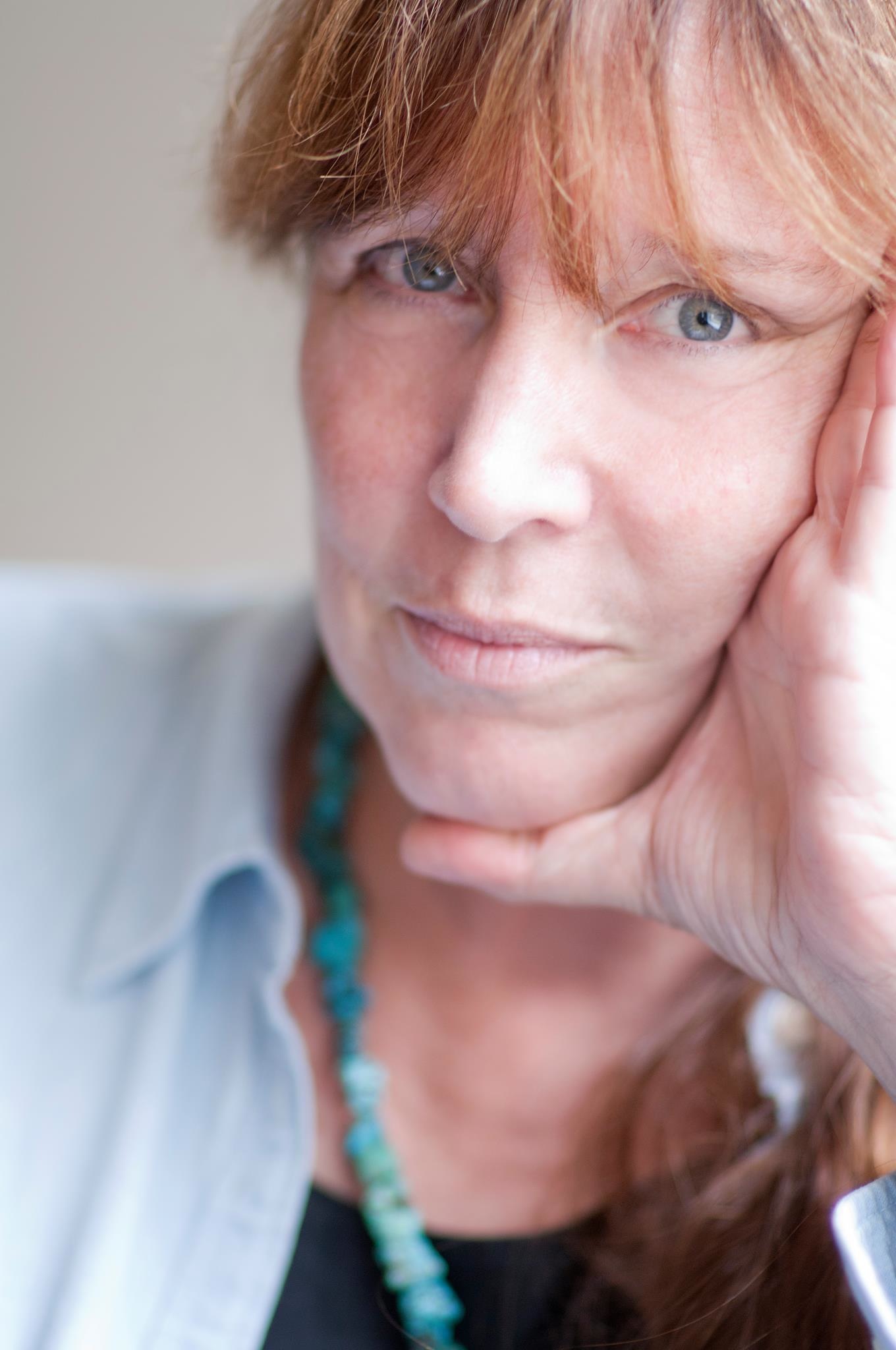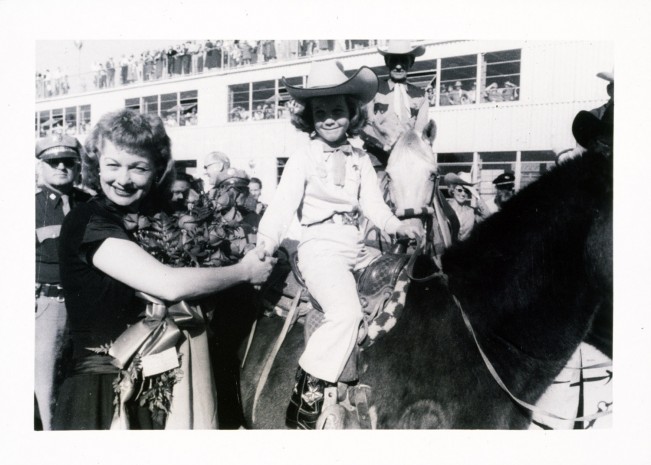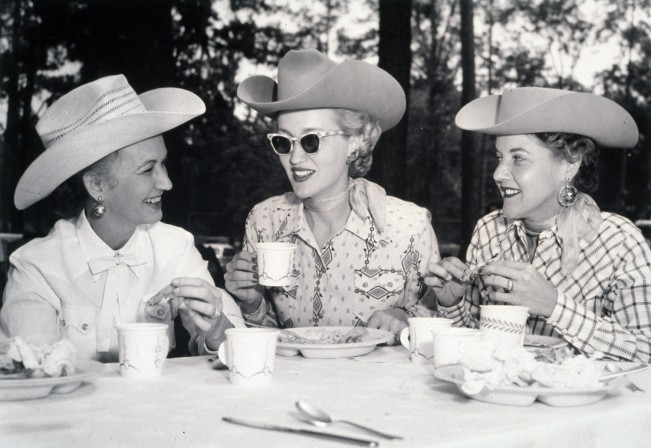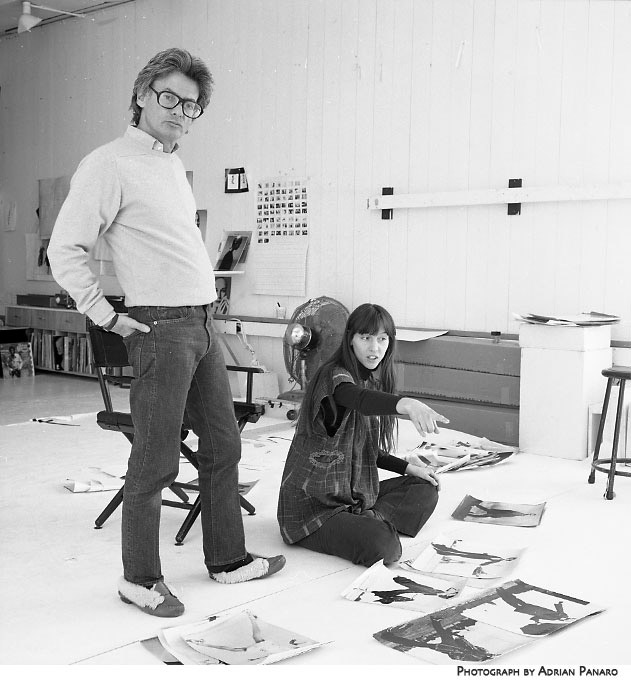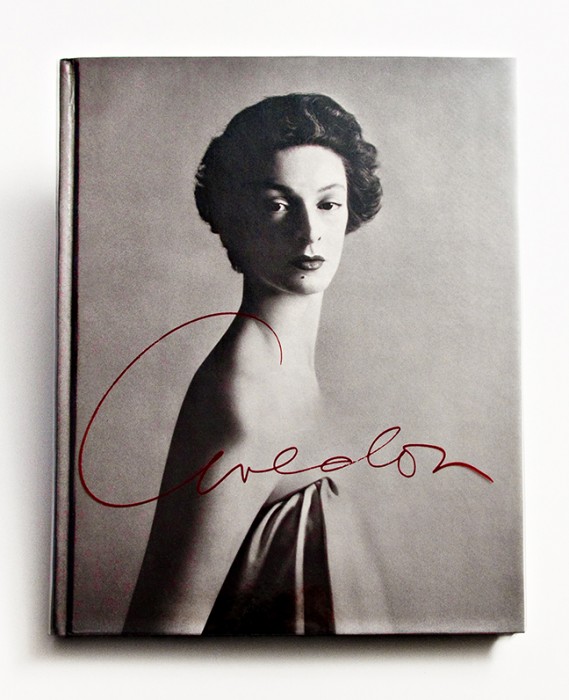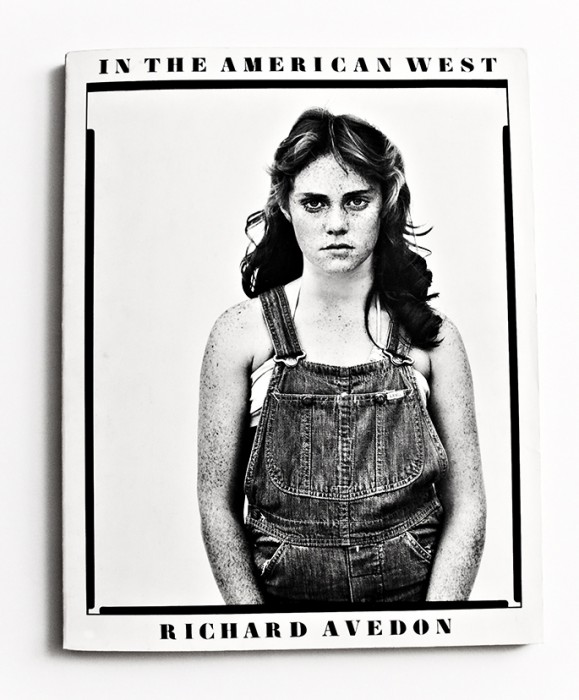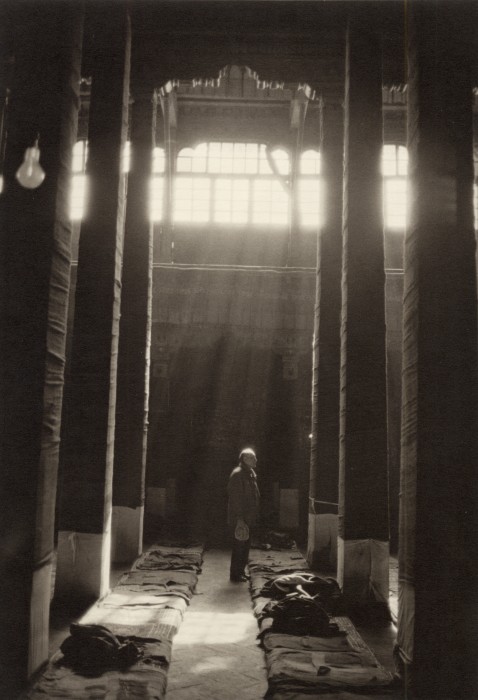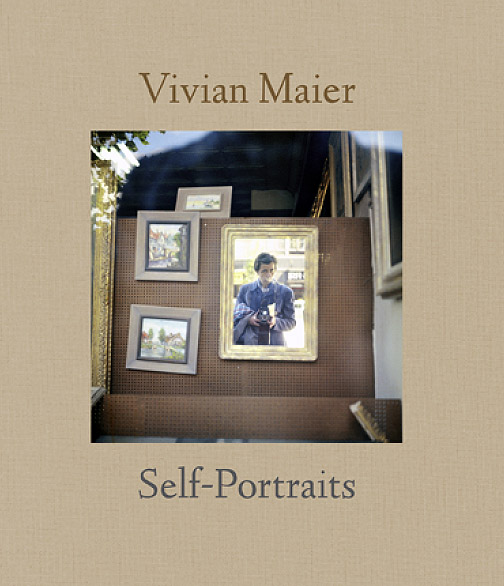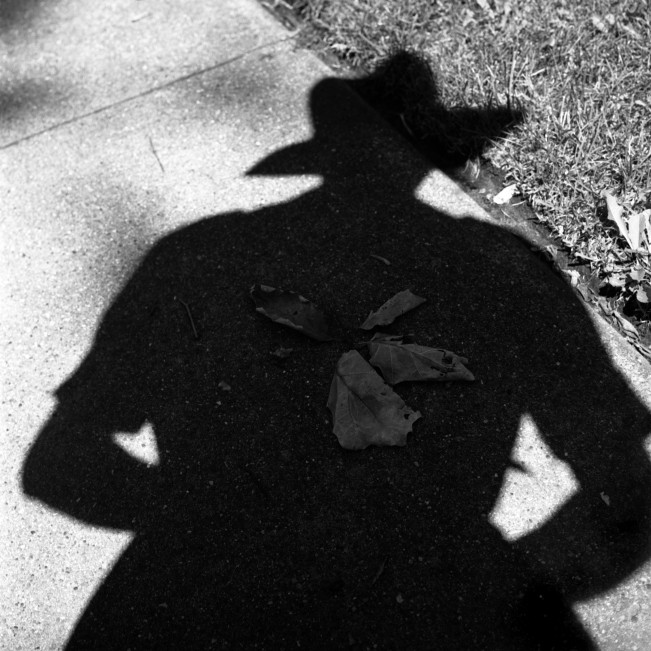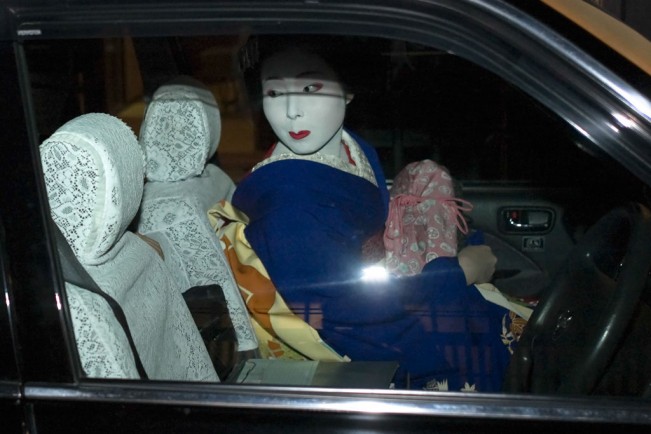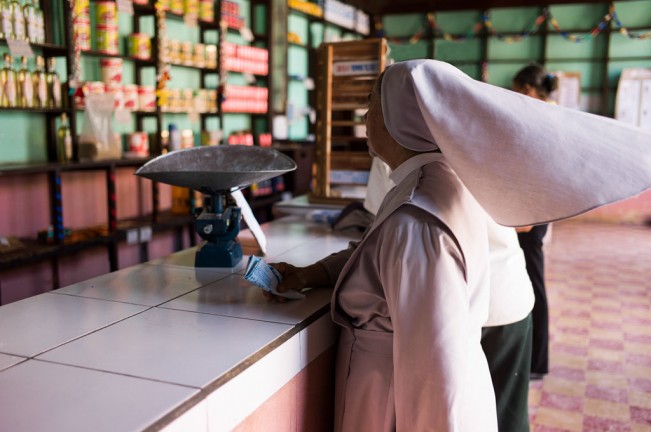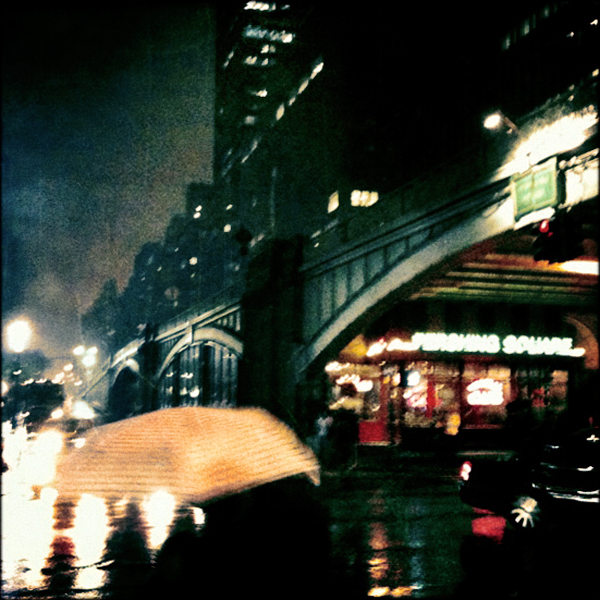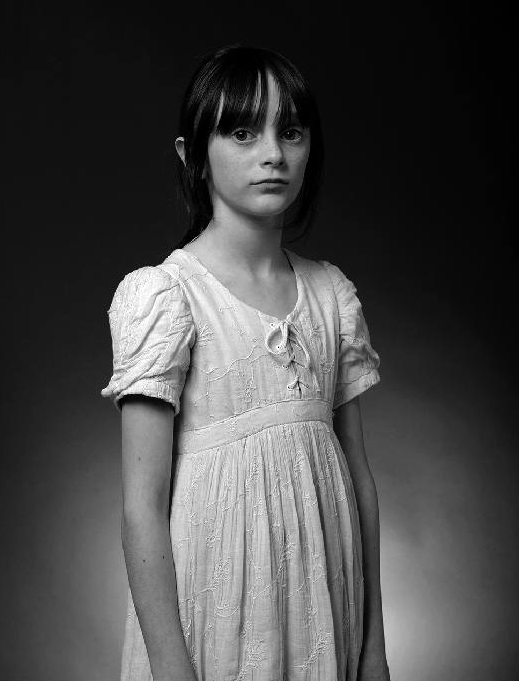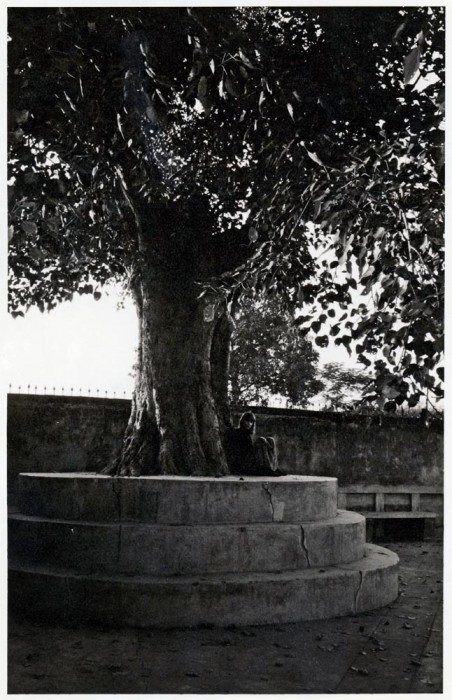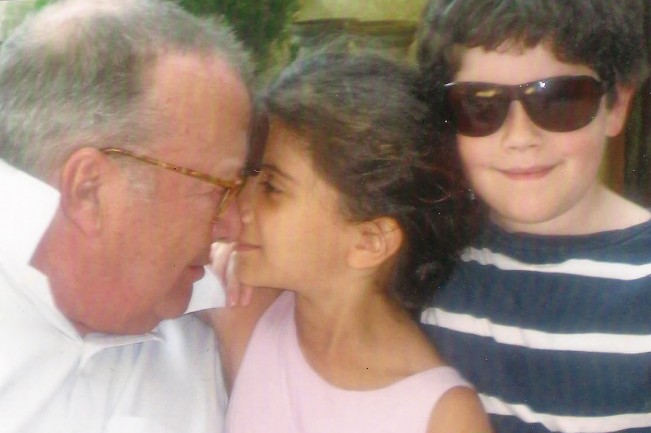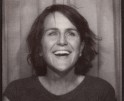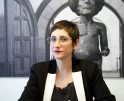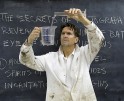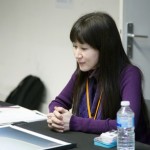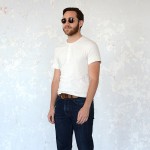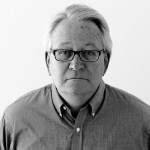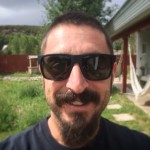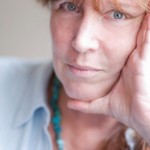ReRuns: The Elizabeth Avedon Mixtape
LENSCRATCH is revisiting some of our favorite posts, Mixtapes, and Interviews this week! Today we feature Elizabeth Avedon’s Mixtape and learn more about her remarkable life and celebrate her contributions to our community.
Constructing today’s Mixtape was incredibly exciting–I learned in-depth about a friend and design icon who has traversed a remarkable photographic terrain, creating a legacy for excellence and creativity. The Elizabeth Avedon blog is a go-to destination for photographers, bringing her unique perspective to her observations and posts. I first met Elizabeth Avedon when she reviewed my work at Review Santa Fe. I had no idea what to expect, but it turned out that our twenty minutes was my favorite of the event. She was warm, funny, engaging, and encouraging. We kept in touch and several years later, when I was exhibiting in New York, she attended my opening. It was a reflection of the kind of person she is, someone who makes the extra effort to support, encourage, and educate. It was great to reunite with her in Chicago at the Filter Photo Festival this past fall.
Elizabeth carries a lifetime of creative seeing, that combined with her exposure to the greats of design and photography, add up to a remarkable ability to make her mark on all aspects of design that surround the photograph. Her down-to-earth generosity and unflagging enthusiasm for all things photographic make her a very special member of our community. It is with great pleasure that I introduce THE ELIZABETH AVEDON MIXTAPE!
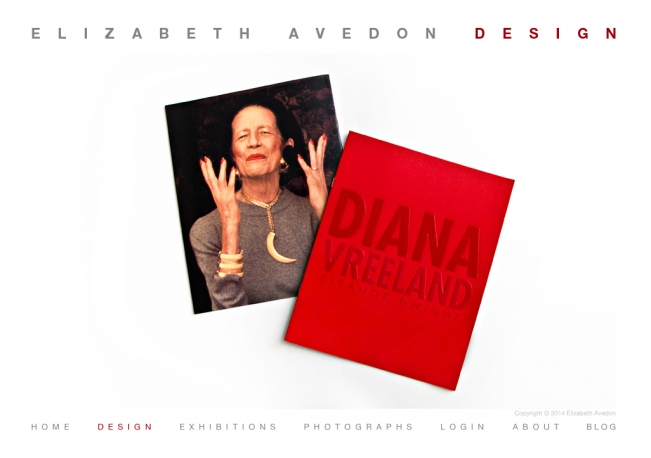
Tell us about your growing up and what brought you to photography.
I had a sort of wacky childhood growing up in Texas just as it was on the brink of transitioning from a rural western countryside with farms and ranches, to the 60’s oil boom and rapidly growing Space Center. Before the change, my older sister and brother could still ride their horses to school; there really was just a little red schoolhouse. On weekends my family went on trail rides on an endless dirt road. It’s now I-10, a major ten lane highway! However my father, a transplanted New Yorker and amateur photographer, had a lot of friends that were LIFE Magazine photographers. They would come down to our place in Texas and use our stables as a backdrop for their stories. I was in LIFE Magazine twice as a child and remember being awed by all the photographic equipment that arrived in big black metal cases, out of which unfolded huge arrays of lights, tripods, cameras, and lenses.
My father used to bring celebrities to Houston for the Rodeo, so I was photographed with everyone from Roy Rogers and Dale Evans, Marshal Dillon and Wyatt Earp (or the actors who played them), to greeting Lucille Ball and Desi Arnaz with red roses on my horse Diamond on the airport tarmac with the Harris County Sheriffs Mounted Posse on horseback circled around. I later sat on Desi’s lap as they were interviewed on a stage set for television. Lucy was a huge star at the time and I was aware of all the photographers’ camera’s, cables, and lights involved in these events.
My mother had been a fashion model in New York, so I spent countless hours studying the photographs of Irving Penn, David Bailey, Henry Clark, Burt Stern, Horst P. Horst and Richard Avedon in the stacks of her latest fashion magazines. I scrutinized LIFE, Esquire and National Geographic at the work of Gordon Parks, Alfred Eisenstaedt, Eve Arnold, Slim Aarons, Art Kane and Bill Eppridge. I wasn’t literally aware of their names back then, but I remembered all of their images.
When I moved to New York to go to Parsons School of Design, I brought three of my father’s old Leica 3f’s with me. To my great fortune Tod Papageorge was my first formal instructor in Photography there. (He later went on to become the Walker Evans Professor of Photography and Director of Graduate Studies in Photography at the Yale School of Art, only recently retiring after 30 years.) Tod was an extraordinary guide, opening up the worlds of Walker Evans, Robert Frank, Kertész, Brassaï, Atget and Cartier-Bresson. He taught me the merits of shooting with Leica’s, the mysteries of developing and printing film and gave me an ongoing appreciation for black and white photography and a passion for street shooting. In the early 70’s I was allowed to hang out with his tight Museum of Modern Art circle sometimes after class. This awesome group consisted of Garry Winogrand, Paul McDonough, and Joel Meyerowitz. I remember quietly absorbing their conversations about photography and John Szarkowski, and even had the chance to occasionally follow them around as they photographed in the streets. It’s doubtful they remember, as this was obviously a bigger deal to me than to any of them.
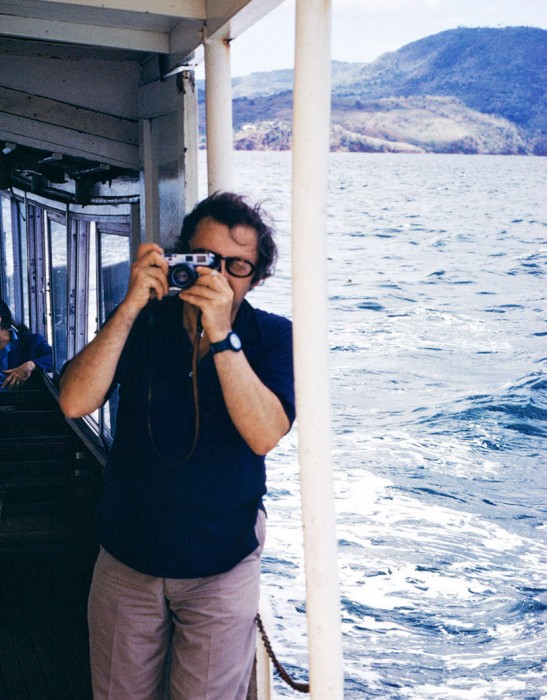
Saul Leiter, Martinique, 1972. Snapshot © Elizabeth Paul Avedon
During my first few years in New York I met many photographers, some successful at the time, others not yet well known, some still assistants to now forgotten photographers. Not so famous at that time was Saul Leiter. His friends and I would all meet at the now defunct Ratner’s Kosher Delicatessen on the Lower East Side, which was open all night, shooting photographs of the crazies and kooky people who hung out there late at night. I once went on a cruise in the Caribbean as a model for the French Line M.S. deGrasse with Saul as the photographer for the shoot. I have a few beautiful color slides he took of me…somewhere.
Also at Parsons, I met Marvin Israel who changed the course of my life. Marvin was best known for creating, along with Doon Arbus, the first retrospective of Diane Arbus’ photographs at the Museum of Modern Art; as well as designing and editing her famous Aperture Monograph, now in it’s umpteenth printing. After graduating from Parsons, I worked as his assistant on several books and for years after he was a close friend. He was instrumental in introducing me to Richard Avedon and I began assisting both of them editing thousands of contact sheets toward a future project. So my first real work in the photo world, started at the top with the most exceptional photographs….
What is your title and job description and tell us about a typical day?
I’ve always worn several hats at the same time, so it’s always a challenge – or never been possible – to create a single job description or title. I’ve collaborated with museums, publishing houses, advertising agencies, and galleries, including editing and designing the retrospective exhibition and book “Avedon: 1949-1979″ for the Metropolitan Museum of Art, Dallas Museum of Fine Arts, and High Museum, Atlanta; “Avedon: In the American West” for the Amon Carter Museum, Corcoran Gallery, and Art Institute of Chicago.
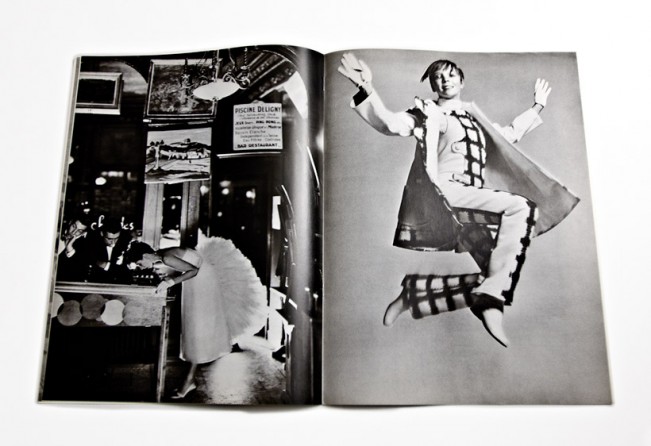
AVEDON: 1947 – 1977 museum catalog layouts contrasted the years: Suzy Parker, 1956 (l), Penelope Tree, 1968 (r).
I created an exhibition for Richard Gere of his photographs and two portfolios’ “Tibet” and “Zanskar,” the sales of which raised money for his Foundation.
I worked in advertising as Art Director for Ralph Lauren on national ad shoots and a decade later worked for his son, David Lauren, as Photo Editor on his then new venture, Polo.com Magazine. I moved to New Mexico briefly where I was Gallery Director at Photo-eye. There’s a great Photography scene there and I met a lot of interesting people involved with it, but missed my sons in New York too much and moved back.
This month is a good sample of the work I do • I wrote my impressions of Vivian Maier in an essay for the recently published book “Self-Portraits: Vivian Maier (powerHouse). There was a book signing at Howard Greenberg Gallery this month with Vivian Maier’s filmmaker and editor, John Maloof, at the opening of the exhibition of the same name •
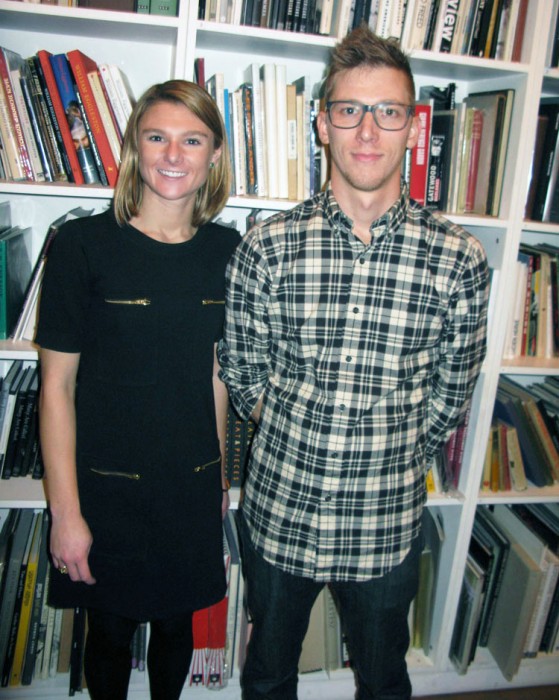
Curator, Frances Vignola and Vivian Maier Collections, John Maloof, at the “Self-Portrait: Vivian Maier” exhibition at Howard Greenberg Gallery.
Snapshot © Elizabeth Paul Avedon
I designed new company logo’s, “Inez and Vinoodh” and “Pretty Much Everything,” for the incredible fashion photographers, Inez Van Lamsweerde and Vinoodh Matadin. I’m very excited about how they turned out •

InezandVinoodh logo designed for photographers, Inez Van Lamsweerde and Vinoodh Matadin, new company “Pretty Much Everything”
I edited and sequenced photographs for an exhibition by Magdalena Sole at the Leica Store Soho in New York. The show included several of her series; moving images taken in the aftermath of the earthquake and tsunami in Japan, her beautiful series from the Mississippi Delta, and a new images shot in Cuba. This is the third exhibition I’ve worked on with Ms. Sole •
Photographer Sean Perry and I crafted an event he produced about editing photographs for his Photography classes in Austin, Texas. I shared my thoughts on design, editing, sequencing – how we connect with certain images and working with large groups of photographs, including an ongoing project I am designing and developing with Mr. Perry, Fotopolis •
I juried an exhibition called FACES for the Darkroom Gallery. There were a record number of entries received so it was challenging to edit down to a small group for their shows and a handful for Jurors Choice and Honorable mentions •
I posted several interesting photographers work I met at the recent Filter Photo Festival on my photo blog, along with a few short book reviews, one on Photoeye’s newsletter of Photographer Nick Brandt’s trilogy documenting the disappearing natural world and animals of East Africa • I teach Photography undergrads at the School of Visual Arts once a week and in the summer I teach a Thesis Book Design and Branding class in the Masters in Digital Photography program. It’s a great opportunity to view up-and-coming photographers work and to watch their careers grow over time.
I was in the midst of transcribing several hours of tapes of Saul Leiter discussing his career and gossiping about artists from two centuries ago when there was the sad news of his passing….
What are some of your proudest achievements?
Beyond the physical objects I design, I’m most inspired by the opportunity to construct the ephemeral space around exhibitions. Building temporary environments to best communicate what the artist’s work expresses in a physical way is a great challenge. It’s the chance to elevate the pictures to a true and immersive multi-dimensional experience.
It started with the retrospective exhibition of Richard Avedon’s fashion photography I designed at the Metropolitan Museum of Art. What I learned crafting that project gave me the tools to work with throughout my career. This was at least an eight plus year project. The exhibition was in 1979, one of the most successful shows the Metropolitan had up to that point, except for Tutankhamen. When I came into the picture on Marvin’s recommendation, I was to help edit contact sheets from all of Avedon’s fashion shoots over the past 40 years. This was of course before computers and digital files, so it took a team of darkroom printers many years to accomplish. The contact sheets were in chronological order in endless cartons. It took years to edit down to a manageable group and then edit those down to 2 or 3 choices from each chosen sitting….etc. After working on it with RA for several years and creating an extensive book dummy, Dick was going to hire someone to design the exhibition at the Met. I knew the work inside out and had a vision of how I saw it, complete and laid out – so told him about it. I asked him to hire me to redesign the space to fit the work and he did.
I had a foam core model of the space to the scale of 1” = 1’. I had all the choice images printed to that scale in several sizes. I designed the show into four continuous rooms, starting out small then increasing in size and brightness as the work became larger and backgrounds became whiter. The first room was like a small jewel box with his early work in Paris in the 40’s, framed in Parisian gold leaf wood frames, overall dimly lit with images spotlit. The second room was the 50’s, whiter backgrounds, fashion house ladies in groups, Mike Nichols and Suzy Parker acting out as Liz and Dick, brighter lighting but still traditional horizontal hanging. In the third room, The 60’s, the space became larger, the ceiling higher, the lighting was bright with large prints up and down the walls. The last room he called his Icons. 6 or 7 very large portraits of “real” women, not fashion models, white backgrounds, extremely large prints unframed hanging just simply as in a cathedral.
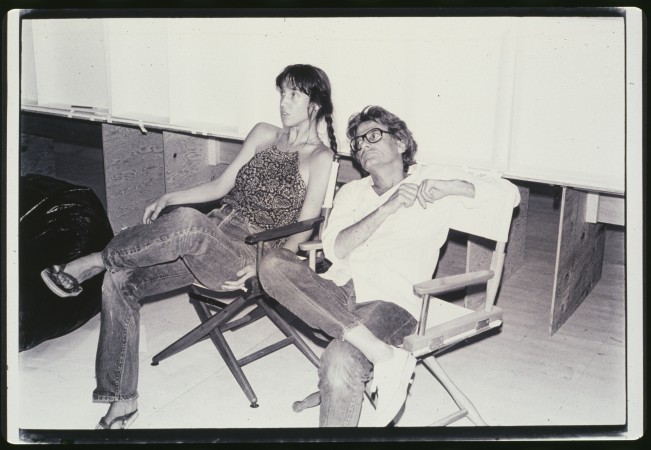
Reviewing photographs sequenced on the wall in front, with museum foam core model behind. Photograph © Adrian Panaro
From there I was able to design Avedon’s work “In the American West” into the unique architecture of the Amon Carter Museum. The earlier exhibition I designed at the Metropolitan deeply informed this project, as well as those that came after.
I’m also proud of several in-depth interviews I conducted for Jean-Jacques Naudets former publication, “La Lettre de la Photographie,” now “L’Oeil de la Photography.” Howard Greenberg, Joel Peter Witkin, Wm. Hunt, Anne Tucker, Jack Woody, and Elisabeth Biondi come to mind first. I’m hoping to expand on them in a future book.
What do you look for when attending a portfolio review?
I like a lot of different styles and genre’s of work, but in all I look for some consistency in the subject matter or the eye of the photographer or a cohesive look to the work. A vision or obsession the photographer is committed to. I try to look past their technical skills (unless they are really atrocious) to see the images being projected. I’m also looking for something that is indefinable, something that evokes mystery or a point in time captured in the past suggesting unknown possibilities for the future. It’s really hard to say until I see it.
Any advice for photographers coming to a review event?
Simplify. Practice.
I don’t think I’m saying anything new when I say “Be Prepared.” Bring in one solid project, approximately 12-15 images, 20 max. Be prepared to speak about them, but know the entire encounter may only be 15 minutes. Allow 5 minutes to explain your work, give the reviewer 10 minutes to give feedback. If you do all the talking, what have you learned? You leave with exactly what you came with. Research your reviewers before meeting them. Not all reviewers will respond to your work. Listen to all, take in what you find helpful and move on from the others.
Don’t criticize your own work! Don’t point out how bad your prints may be. Don’t say, “I should have brought my other work.” If you don’t believe in the work you are showing, how can the reviewer. If the reviewer asks if you have more work with you or shows a greater interest, then you can bring out another series in the waiting, but don’t overwhelm the reviewers with too much work or too diverse work.
What is something unexpected that we don’t know about you?
Two things come to mind.
Paul Simon wrote a song about me. And the second, in India years back, Richard Gere and I snuck into the garden with the Bodhi Tree, the tree Buddha was enlightened under. I used one of it’s perfect leaves as a symbol throughout a book I designed years later, “An Open Heart: Practicing Compassion in Everyday Life” by the Dalai Lama.
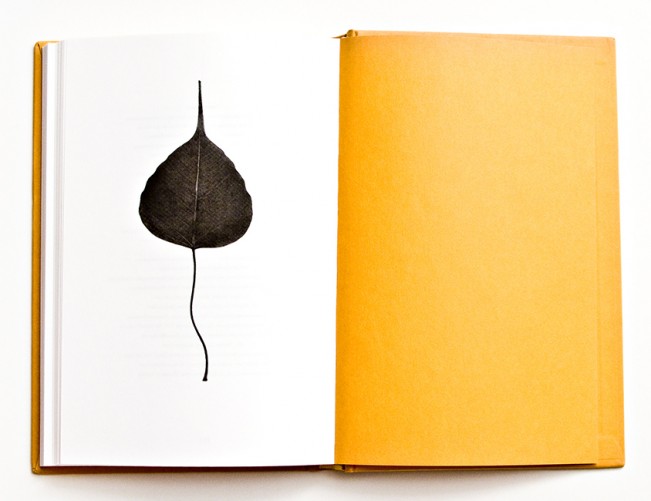
Bodhi Leaf. An Open Heart by the Dalai Lama (Little Brown & Co)
Bodhi Leaf: Symbol of peace and the ultimate potential that lies within us all. Bodh Gaya, India
And since it’s a Mixtape, what is your favorite song or band?
I listen to an eclectic mix of world sounds and music. First, anything by Texan Billy Gibbons, followed by my new appreciation for Led Zeppelin, the Rolling Stones and Mark Knopfler, and Kirtan, Kundalini, Indian and Tibetan Buddhist chants, as well as Gypsy Jazz by my son’s trio, Mexican Mariachi’s, Gaelic Folk…. the list goes on.
Because this is a Mixtape, I now put down my headphones and hand the turntables over to Elizabeth….
The following excerpts are from an unpublished interview with Jean-Jacques Naudet, L’Oeil de la Photographie’s Publisher and Editor-in-Chief; and part of a long-range book project I’m working on profiling some of the most significant people in Photography.
Jean-Jacques Naudet is a prominent figure in the overall History of Photography, both old school and new. He has championed the careers of countless photographers through the decades. As Editor-in-Chief of French PHOTO Magazine during it’s heyday in the 1970’s and ’80’s, editor at large for American PHOTO and the author of 3 books; Marilyn (Assouline,); Marlene Dietrich: Photographs and Memories (Thames & Hudson); and Icons of the 20th Century: 200 Men and Women Who Have Made a Difference (Overlook); Naudet went on to found his own publications, first “Le Lettre de la Photographie and now “L’Oeil de la Photographie.”
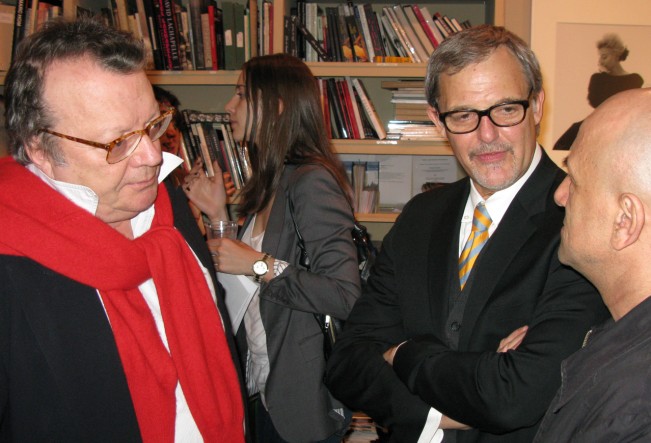
(left) Jean-Jacques Naudet, Ed-in-Chief L’Oeil de la Photographie; with (center) David Schonauer, Ed-in-Chief American Photography Pro Photo Daily; and (right) Philippe Achard, Achard & Associates.
“Photography has never been as fashionable as now. Photography has replaced the verb in communication. In fact Photography IS the communication now.” – Jean-Jacques Naudet
I didn’t know anything about photography when I started. I discovered photography and photography became a passion. Roger Thérond – who was, who is my mentor, and was the Director of Match, the Director of PHOTO, in fact was the Director of the Hachette Filipacchi Publishing Company; for the second piece I had to write for PHOTO, Roger sent me to go and meet Romeo Martinez and make an issue about the History of Photography. So I went to see Romeo. I was really really impressed and Romeo gave me all the information I wanted and then he said, “What do you know about Atget?” I said, ”Atget. Great photographer, loved by the Surrealists and the who made us remember the old Paris.”
He said, “Tell me about Atget and the prostitutes?” and I didn’t know anything about Atget and the prostitutes. “So, maybe one day we will meet again, but next time try to know better about Atget and the prostitutes. If you don’t know about Atget and the prostitutes, you will never know anything about photography. During the next five years I never met Romeo, then one day by chance I bumped into him at an opening and I said, “You know, I know better about Atget and the prostitutes.” So I gave him proof and that was the beginning of a beautiful friendship. After Roger, he was my second mentor in photography.

Shiva and Jean-Jacques. “My wife, Shiva, let’s say we’ve been living together for 48 years now. Let’s say without her I’m nothing. She’s really – what is that expression – the cement between the stones. She has been the glue of this family.”
I discovered the power of photography, but I discovered what I liked even better than photography, were photographers. Photographers are really the last cowboys of the art scene in the 20th century. After photography, all the art experience or all these communication was collective – there were movies, there was television – but the last individual adventure was photography.
Of course I remember the giants. Henri Cartier-Bresson. Robert Doisneau. The first time I met Henri, he said, you have to tell me “tu”. Can you imagine you meet Henri Cartier-Bresson for the first time and he’s forty years older than you, and he asks, “Tu dois me dire tu.” Oh, God!
All these dinosaurs, these mythical legends were alive at this time. There was of course Dick Avedon, Irving Penn and in fashion there was Guy Bourdin. I remember my first trip in America in 1975. The city was in bad shape. There was the famous headline from President Gerald Ford to New York City, “Ford to City: Drop Dead.” On that first trip I met Avedon, Penn, Lee Friedlander, Garry Winogrand, all these people. Every day there was a discovery.
Every day in France, every day in Europe, every day in America we were able to discover someone we didn’t know or someone who was totally unknown. There was the discovery of Jacques Henri Lartigue, there was the discovery of Jeanloup Sieff, and there was even the discovery of W. Eugene Smith. There was the discovery of the History of Photography, the discovery of the 19th century and the discovery of the beginning of the 20th century with all these prolific photographers from Martin Munkácsi to Man Ray. That’s why the French PHOTO was magical at this time, because not only did we enjoy our daily profession, but also we made other people enjoy, and for this we were well paid.
+ + +
The first time I arrived in New York was in 1975, but I remember the day I decided to live in New York. It was Halloween 1984; I decided New York was my dream. MATCH at this time had a marvelous small penthouse apartment on 77th Street, just in front of the Mark Hotel. I arrived on the day of Halloween; I put my suitcase in the apartment, and went back out to the street. Just when I opened the gate, I saw this incredibly gorgeous looking Upper East Side girl, so I stopped to watch her. At the same time a police car came and stopped in front of her. I was 10 meters from the girl. The car swerved off the road onto the sidewalk and stopped the girl. After one or two seconds, this girl is starting to laugh. I thought, what’s going on? So I approach step by step, and guess what? The policemen were wearing pig’s masks! I said, “I definitely want to live here.”
My idea was for Roger to decide to send me to New York, and after 5 years I succeeded, so I arrived and for me it’s still the same magical thing. I just spent seven months in Paris. I am as happy as Paradise when I returned two weeks ago. I have the same magical feeling as when I first came to the city.
+ + +
The “Marilyn” was quite exciting. I had just finished a special issue of American PHOTO where I spent two months all around the United States to find all these old guys who photographed Marilyn Monroe; Ossie Leviness, George Barris and all of them were in fact still in love with her. The one I remember the most was André De Dienes who showed me his diary and especially the page where he talks about his sexual relationship with Marilyn. That was so surreal to see this very very old guy being the lover of Marilyn Monroe.
Probably one of my best memories is when I discovered that all the Milton Greene pictures had at this time been bought by this kind of strange Greek guy with the complicity of the last Milton mistress; and everything was deeply hidden in storage in Pasadena. So I went there for Match to meet the guy. He called me at the Chateau Marmont and he said, “You have to find a way to come to Pasadena. Let’s meet in a bar.” So I went to the bar and he said, “Are you sure you aren’t followed?” I said, “Of course.” I arrived in the storage and discovered thousands of vintage prints by Milton Greene and probably all the dresses and all the personal objects of Marilyn. Later, Joshua Greene and the family sued the guy and they recuperated everything.
+ + +
The beautiful souvenir I have of the Marlene Dietrich book – I’m quite friendly with Peter Riva, the son of Marlene Dietrich’s daughter Maria Riva, the grandson of Marlene. Peter called me and said, “Jean-Jacques, are you interested in spending one week in Berlin, the east part of Berlin (this was after ’89) and you will select in the archives of Marlene what you want for a book?” I spent one week, probably 18 hours a day, looking at all the personal archives of Marlene.
The thing I must confess, if the work of looking through archives, digging for pictures was very well paid, I would have preferred to look for pictures, than to publish pictures.
+ + +
I’m particularly proud of a couple of things. Avedon’s interviews were quite strong. Avedon was not really fond of French PHOTO and same for Penn. They found it was a girly magazine. The magazine was important enough so they wanted to be in it in a way, so each time I wanted to have a portfolio, he would say, “Yes, but who is going to do the text?” So I would suggest a couple of names. Each time he said, “No, no. Naudet, if you want my portfolio, I want Roland Barthes.” And because of Richard Avedon I became quite friends with Roland Barthes. Three times I call Barthes and say, “Avedon is giving us a huge gorgeous portfolio, but you have to write the text.” So we used to meet with Barthes at his favorite place at the bar of the Hotel Port-Royal.
The fourth time, Avedon was publishing the fashion book (AVEDON: Photographs 1947-1977. Farrar, Straus & Giroux). I called Barthes and said, “Roland, I have a new Avedon portfolio,” and the day after I received a beautiful note from Roland Bartes. He said, “Dear Naudet, I received the book. The book is gorgeous. Avedon is gorgeous, as usual. This book is full of women and you know women are not my cup of tea.”
Then around ‘95, Roger called me one night. “Jean Jacques, Catherine Deneuve has been elected the most gorgeous French woman. Call Avedon and ask him about the pictures of Catherine because he photographed her like no one? We need this picture. “ I said, “Remember Roger, our relationship with Avedon is not so good. Last time with MATCH they didn’t respect the contract.” He said, “Don’t worry, don’t worry Jean-Jacques, this time we are going to respect.”
So I called Avedon, it was probably 8pm. At 7AM, Avedon called and said, “Come to the Studio, I have something for you.” He gave me four spreads, eight pages he designed himself, plus the cover with his written indication “Avedon as big as Deneuve.” Of course, Roger did not respect the contract and of course he changed the layout. Avedon was absolutely furious.
Six months later arrived one of the most important fashion pieces that I have seen in the History of Fashion in the New Yorker, 32 pages of incredible pictures. Roger called and said, “Jean-Jacques, we need to publish these pictures in MATCH.” I say, “Roger, don’t forget last time. Avedon is not going to forgive you.“ He said, “I don’t care. Try.”
I called Avedon, and it was great. He said, “Ah, Roger is interested. If MATCH publishes these 32 pictures, it’s free. If MATCH publishes 24 pages, it’s $30,000. If they publish 16 pages, it’s $40,000. If Match publishes 8 pages, it’s $50,000.” MATCH was not able to publish 32 pictures. They published 8 pages and they paid $50,000. That was his sweet revenge.
And in terms of things that I published and I wouldn’t have published – I’m not going to answer to that. Probably a lot.
[In November 2013, Jean-Jacques Naudet launched his new publication, “L’Oeil de la Photographie,” with 34 international correspondents]
As you know, I worked for the same company for almost forty years. In 2009, Hachette Filipacchi was sold to Hearst. I was too young to retire or too passionate to retire. I really wanted to continue in photography because it’s the only thing I know. I was totally fascinated by this new technology, this new form of expression, so I had this idea to make a daily publication talking about of all the things that were going on in photography all around the world.
People say behind a success you always have a concept. That’s true, but that not so true. Behind a success you always have a team and that’s the most important. The thing I’m really proud of is the team now working, writing and collaborating. All of these 34 people coming from all different places, young and old, male and female, from all over the world, each of them different.
As I said success is not only a concept, success is always a team.
Link: http://www.loeildelaphotographie.com
Thank you Elizabeth, for sharing your remarkable life. We are so lucky to have you in our community!
To follow Elizabeth:
http://instagram.com/elizabethavedon#
http://elizabethavedon.blogspot.com/
Posts on Lenscratch may not be reproduced without the permission of the Lenscratch staff and the photographer.
Recommended
-
The Christy Karpinski MixtapeDecember 2nd, 2023
-
The Rotem Rozental MixtapeJanuary 27th, 2023
-
The Brian Taylor MixtapeJune 14th, 2019
-
The David Rosenberg MixtapeMay 3rd, 2019
-
The Jonathan Blaustein MixtapeJuly 20th, 2018

